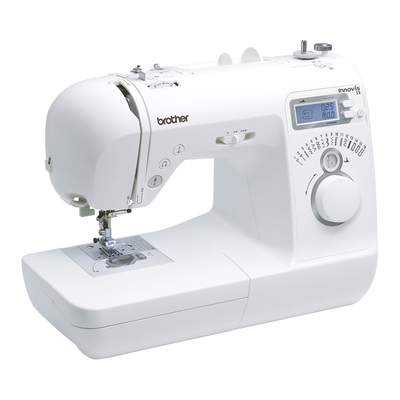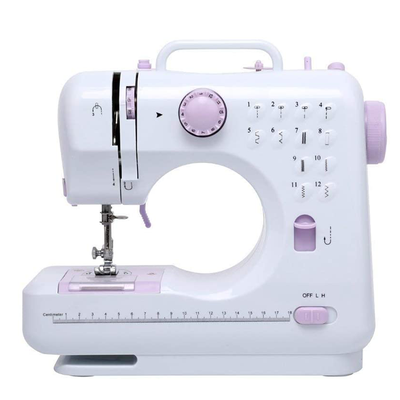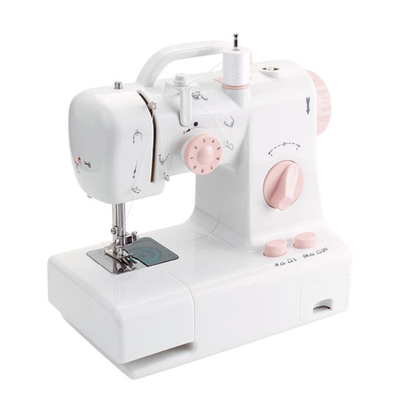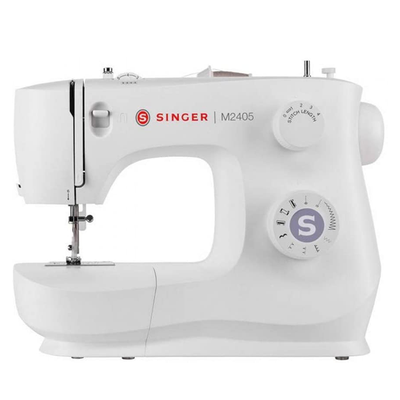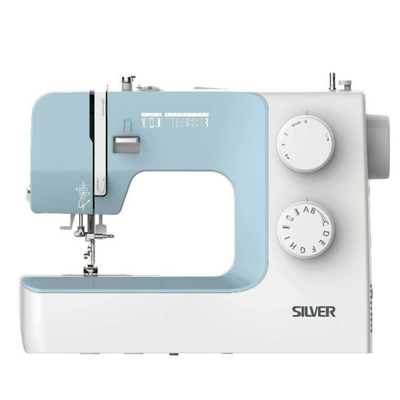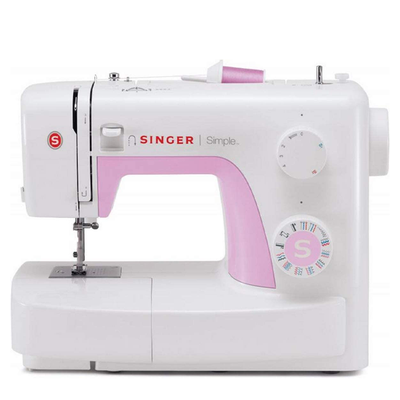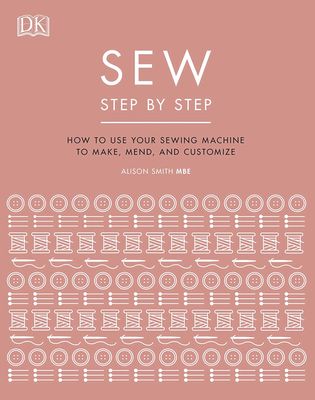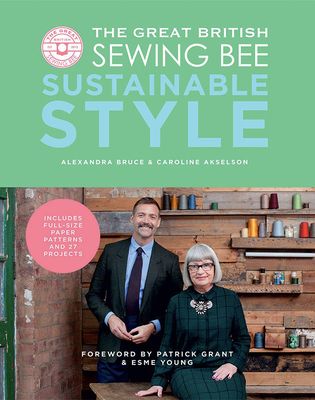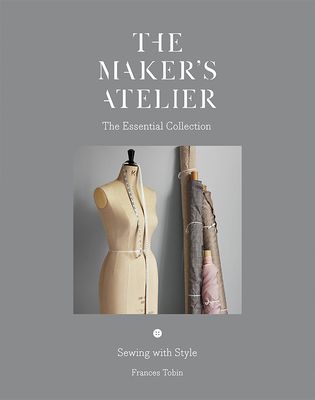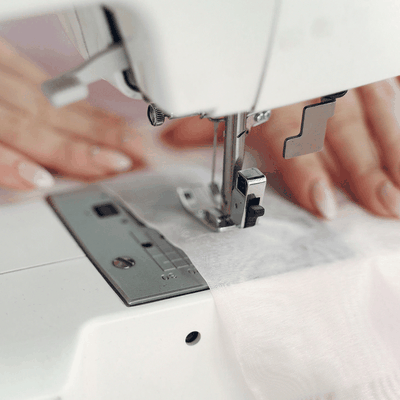
The SL Guide To Finding A Hobby: Sewing
THE BASICS…
Initial supplies
If you plan to learn to sew, then assembling a starter kit of basic supplies is probably the place to start. This might include:
Sewing machines
Maybe you already own a sewing machine, but if you’re in the market for one, it can be difficult figuring out which one might suit your needs – and abilities – best. Plus, they differ widely in cost, so it pays to know what you’re looking for. To help narrow the search, follow this advice:
Budget: Ask yourself, how much money do you have to work with, and how much do you realistically plan to use it? If the plan is to eventually make your own clothes, you might require something more heavy-duty, but if this a purely recreational hobby, you probably don’t need to spend as much.
Ordering online: At the moment, chances are you’re going to have to order your machine online. Some companies will include free, virtual sewing lessons when you purchase your machine, while others will come with different levels of guarantee and even delivery. However, the advantage is you’ll be able to easily compare prices and features – just take care to do your research.
Number/styles of stitches: Beginners are likely to only need a machine with just two stitches: straight and zig zag. More experienced sewers should look for more variety – for example, if you want to embroider or quilt, look for machines that provide those capabilities. Additionally, make sure there’s the ability to adjust stitch length, zig zag width and tension so you have more control.
Accessories: Most machines include a bobbin and a presser foot, but some include much more – for example, a zipper foot, buttonhole foot, embroidery foot, removable extended table and storage. Depending how many of these you want will obviously affect the price.
Extra features: Some machines include specific capabilities that can make sewing a whole lot easier like a thread cutter, automatic needle threader, lights, free arm, blind stitching and buttonhole capabilities. Again, this is typical on more expensive machines, which might not be right for beginners
Frame construction: If you want a machine that’s going to last, look for a metal frame. Plastic frames are more common – and cheaper – but they can break more easily and be more difficult to repair.
Interested? Here are some of the top-rated machines to shop now...
SOME PRO TIPS…
“Sew with a small magnet next to you, then when you drop or lose a needle or pins, wave it around the area until it finds them. Also, keep your sewing scissors for fabric only, as paper blunts scissors. To sharpen them, take a piece of silver foil, fold into strips as if making a fan and cut up the strips of the foil. Use the best thread you can afford – it makes all the difference. And only make what you love – don’t follow what everyone else is doing. That way you’re bound to stick with it and make more.” – the experts at The Sewing Directory
“A sewing pattern gives you all the tools you need to make a garment. It’s made up of an envelope with lots of handy information about sizing, what skills you need, garment descriptions, photos and illustrations, body measurements, as well as fabric suggestions and requirements. Inside you’ll also find a set of instructions – this is your guide to making up the garment, along with the pattern tissue (the pattern template), which you’ll use with your fabric to cut out your garment. Get to know the terminology and look for sewing patterns that include the words quick, easy, simple and ‘for beginners’. Most sewing pattern brands will have collections that have been specifically designed for newbies.” – Julie Bonnar of The Pattern Pages
“Once you've selected your project, you'll need to choose a suitable fabric. Some easy fabrics to try sewing with as a beginner are cottons and denim (although a denim needle is required). Check the pattern packet where you will find a list of recommended fabrics for the pattern you've chosen. Try to avoid anything slippery or very fluid because these can be a little tricky to control. If you want to try sewing with a knit, try and choose one that isn't too super stretchy, either.” – Lucy from The Sew Essential
ESSENTIAL READING…
Sew Step By Step: How to use your sewing machine to make, mend, and customize by DK
Make, mend and customise your own garments with this beginner's guide to machine sewing which comes with plenty of instructive photography to guide you along the way. Discover how to read a pattern, use a sewing machine, and sew basic stitches, seams and hems. Explore how to put those skills to use to create and repurpose clothes and soft furnishings. Fully illustrated and easy to use, this tome covers all the essential skills and techniques for successful machine sewing.
Available at Waterstones.com
The Great British Sewing Bee: Sustainable Style by Caroline Akselson & Alexandra Bruce
The companion book to the sixth series of the BBC show, this book is designed to accompany sewers at all levels on their creative journey. Starting with the essentials, sewers will learn how to maintain and care for their sewing machine, find out the secrets to using an overlocker (and what to do if you don't have one) and the key to pattern matching. With a guide that demystifies the fitting process, and with expert sewing tips on making alterations, you'll be able to choose from 27 projects, for both women and men, that will ease you into the world of sustainable sewing.
Available at Waterstones.com
The Maker's Atelier: The essential collection sewing with style by Frances Tobin
A career in fashion, a love of fabrics, a lifetime making clothes, a keen sense of styles that work for women of all ages and shapes: this is the perfect cocktail of skills and passion that make Frances Tobin’s patterns so fool-proof. Containing eight essential patterns, with variations to create a collection of 31 versatile pieces, this is arguably not for beginners, but the pieces are simple in construction and based on quality of cut. Patterns also come in a range of sizes, from UK sizes 8 to 20, with information on measuring and fitting, and advice on fabrics. There are also clear illustrations guide you through each step, so you can create your own essential collection.
Available from Waterstones.com
ONLINE COURSES & TUTORIALS…
The online courses worth considering…
Tilly & The Buttons
Acclaimed author Tilly Walnes is running online courses for those looking to expand and build their sewing skills. There are several levels to choose from, starting with threading a sewing machine to making your own dress – and the best part is, taster sessions are free, complete with an instructive video, a full set of reference notes. Just contact Tilly for more information.
Visit TillyAndTheButtonsWorkshops.com
The Thrifty Stitcher
Learn to sew with Claire-Louise Hardie, a former sewing producer for The Great British Sewing Bee. You can learn from her dedicated tutorials via Vimeo or join her monthly membership club to receive tailored advice based on your existing skills. Plus, there’s a dedicated beginner’s course designed for those who don’t even know how to set up a sewing machine.
Visit TheThriftyStitcher.co.uk
Sew Confident
Whether you want to learn how to hand sew, knit or use a sewing machine, there’s something for everyone over at Sew Confident. All their virtual classes are taught over Zoom (you’ll be emailed a list of material/equipment/fabric or patterns you will need), while VIP members will be able to access pre-recorded videos to get a jump on learning right away.
Visit SewConfident.co.uk
The videos & online tutorials to watch now…
DISCLAIMER: We endeavour to always credit the correct original source of every image we use. If you think a credit may be incorrect, please contact us at info@sheerluxe.com.
